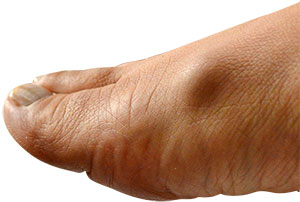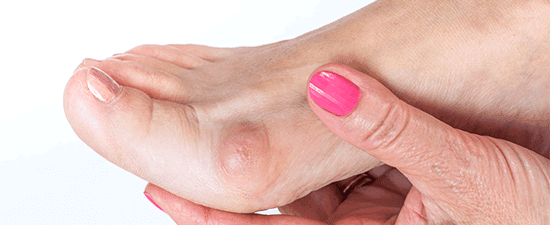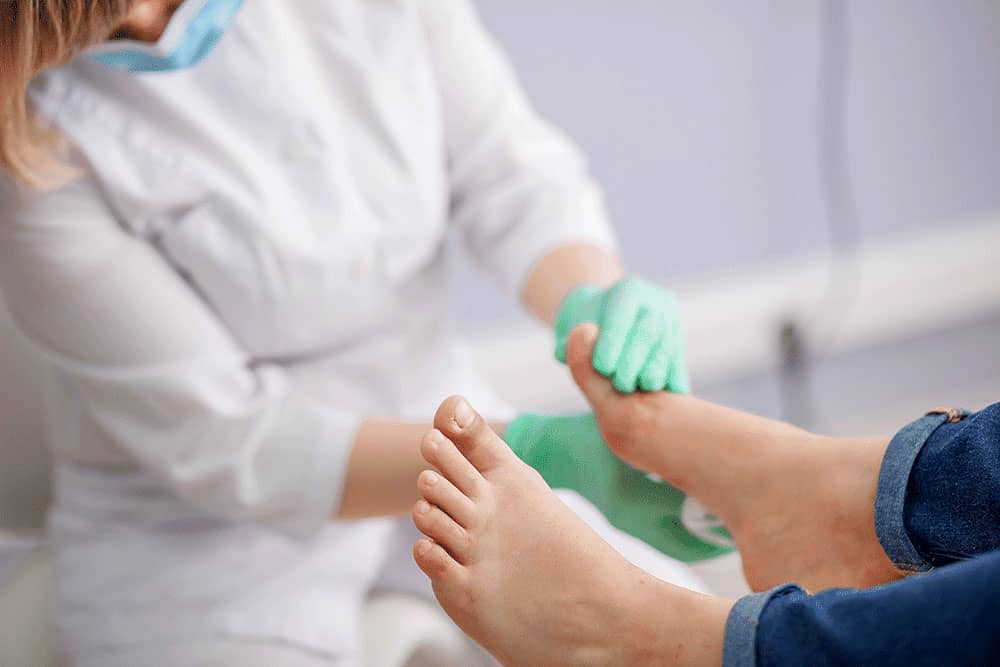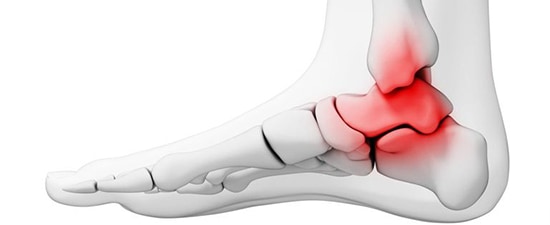- Home
- Foot & Ankle Conditions
- Cysts
- Synovial Cysts
Synovial Cysts: symptoms, causes and treatments
- Published 11/1/2017
- Last Reviewed 6/11/2024

What is a synovial cyst on the foot?
A cyst is a pouch or fluid-filled sac under the skin. Synovial cysts generally occur on the top of the foot. A synovial cyst forms when jelly-like fluid leaks from a nearby joint. Although they're known medically as soft tissue tumors, synovial cysts are not cancerous and are easily treated.
Synovial fluid lubricates the facet joints and helps them move smoothly. A channel between the cyst and joint capsule, tendon sheaths, bursae, and ligaments allows fluid to move freely between the structures.
- What are synovial cyst risk factors?
- What is synovial cyst foot treatment?
- Are there non-surgical treatment options for a synovial cyst?
- Surgical treatment options for a synovial cyst
- University Foot and Ankle Institute is the best choice for synovial cyst treatment
- Synovial cyst FAQs
- Can synovial cysts occur in other parts of your body besides the foot?
- How serious is a synovial cyst?
- What is the difference between a ganglion cyst and a synovial cyst?
- Can a synovial cyst go away on its own?
- Is a synovial cyst cancer?
-
Dr. Gina Nalbandian specializes in reconstructive and revisional foot and ankle surgery, foot and ankle trauma, sports medicine, lapiplasty, and limb salvage.
While an undergrad, Gina volunteered at free clinics, hospitals and with the AIDS Project in Los Angeles, all the while exploring various careers in medicine. She also conducted and published her research in the lab on campus. “I soon found out that the lab life wasn’t for me, and I wanted a more hands-on approach to medicine,” she says.
Dr. Nalbandian did her residency at St. Elizabeth’s Medical Center in Boston, which is affiliated with Tufts University. As a resident, she served an academic coordinator and chief resident.
A resident of Sherman Oaks, Gina continues to volunteer her expertise with the Special Olympics, Happy Feet (providing foot care at homeless shelters), and the Boston Marathon.
Read Our Blog Articles About Cysts and Warts
 My husband recommended Dr. Briskin to consult about my foot. I'm glad I went. I like Dr. Briskin, he is honest and straight to ...Christine F.
My husband recommended Dr. Briskin to consult about my foot. I'm glad I went. I like Dr. Briskin, he is honest and straight to ...Christine F. My experience at UFAI was , has and still is a perfect example of how all medical visits should be . No not just medical but an...Reznick L.
My experience at UFAI was , has and still is a perfect example of how all medical visits should be . No not just medical but an...Reznick L. Please provide handicap parkingBarry S.
Please provide handicap parkingBarry S. Dr. Ambibola Johnson is awesome!Laurie S.
Dr. Ambibola Johnson is awesome!Laurie S. I appreciate the care and timeliness of all my appointments I’ve had at UFAI. Gray, Lydia and the staff all are wonderful. Lydi...Edelmira G.
I appreciate the care and timeliness of all my appointments I’ve had at UFAI. Gray, Lydia and the staff all are wonderful. Lydi...Edelmira G. Very greatfull for the doctor and stuffJesus M.
Very greatfull for the doctor and stuffJesus M. Finally! My resistant plantar warts are finally gone! Dr Briskin did followup until he was sure they were really gone. Thank yo...Jean T.
Finally! My resistant plantar warts are finally gone! Dr Briskin did followup until he was sure they were really gone. Thank yo...Jean T. Doctor was very caringBrigitte S.
Doctor was very caringBrigitte S. Everyone is very nice and efficient-
Everyone is very nice and efficient-
Especially Dr Kelman. He takes very good care of me!!Claudia K. Great costumer service.
Great costumer service.
Prompt and efficientDean W. No . I’m pleased with the care .Michael P.
No . I’m pleased with the care .Michael P. Appreciate the professionalism and expertise, as well as the caring.Stella G.
Appreciate the professionalism and expertise, as well as the caring.Stella G.
-
 Listen Now
11 Common Foot Lumps and Bumps and What To Do About Them
Read More
Listen Now
11 Common Foot Lumps and Bumps and What To Do About Them
Read More
-
 This foot condition is the new back pain — it’s everywhere. UFAI in the News.
Read More
This foot condition is the new back pain — it’s everywhere. UFAI in the News.
Read More
-
 Listen Now
What is Synovial Sarcoma? A Rare and Dangerous Cancer
Read More
Listen Now
What is Synovial Sarcoma? A Rare and Dangerous Cancer
Read More
-
 Listen Now
Expert Insights On Treatment Options For Cystic Lesions Of The Talus
Read More
Listen Now
Expert Insights On Treatment Options For Cystic Lesions Of The Talus
Read More




